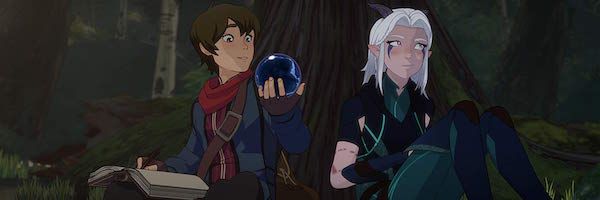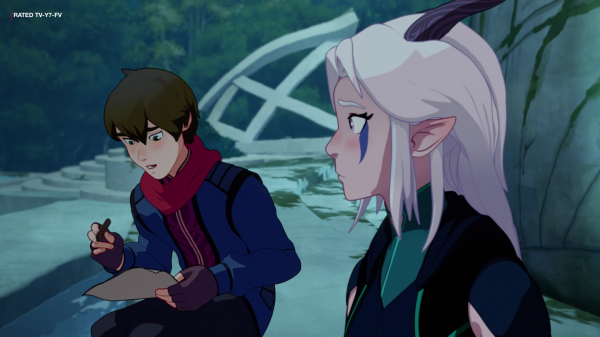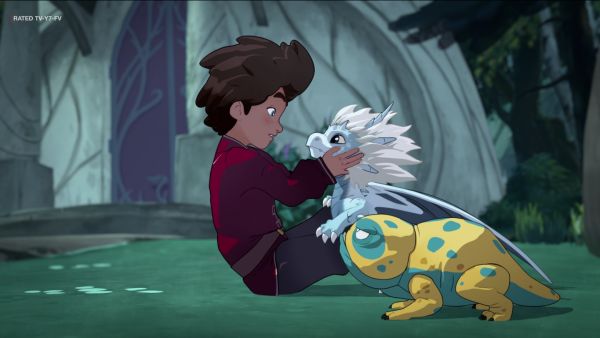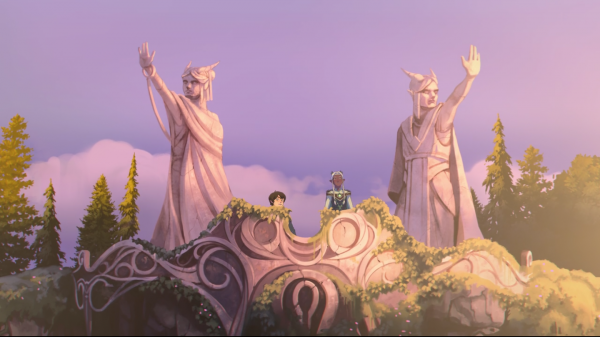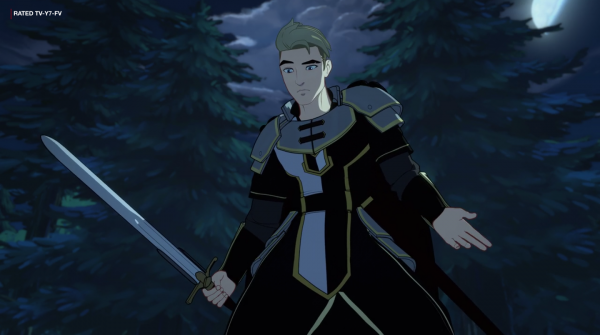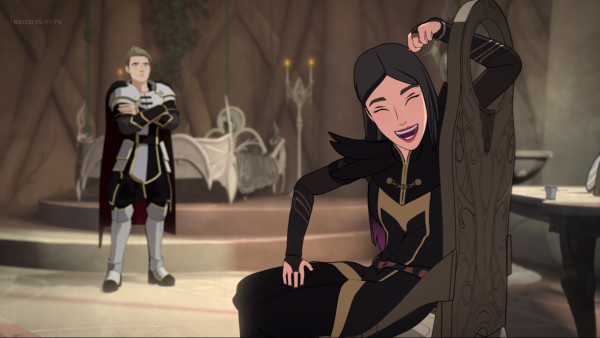It's no secret that I am a huge fan of Netflix's animated series The Dragon Prince. When the first season dropped in the tail end of 2018, I gave several good reasons why folks should give it a try. Perhaps the biggest thing The Dragon Prince has going for it is one of the showrunners — Aaron Ehasz — helped create Avatar: The Last Airbender for Nickelodeon. For those still on the fence, here's the official description from Netflix's The Dragon Prince official website:
"Long ago, the world was divided in two: in the west, the human kingdoms, and in the east, the magical lands of Xadia. The two realms are split by a near-impassable river of fire and lava, and were defended by the King of the Dragons himself, Thunder, until his fateful death…
[Now] an extraordinary discovery inspires two human princes and an elven assassin to team up on an epic quest to bring peace to their warring lands."
Fans of Avatar: The Last Airbender will recognize some of the narrative devices utilized in The Dragon Prince. It takes place on a continent torn asunder by war where each faction draws magical power from a different element. The heroes and villains are not as cut-and-dry as they first appear. And, of course, there's a ton of freakishly adorable animals created by mashing together different Earth animals. But those are surface similarities. The meat of the story is much more morally grey than A:TLA.
Ehasz's experience is crucial to The Dragon Prince’s high fantasy world. Making new cultures out of thin air is no small feat, especially in a genre that consistently puts out stories with lore books dense enough to collapse matter. The fact that The Dragon Prince deals with deep themes on the nature of war, sacrifice, and family in family-friendly 26-minute chunks would be impressive for any animated show. That it is doing so while laboring under Netflix's hard rules about season length is damn near a Peak TV miracle, one that I'm not sure The Dragon Prince can maintain.
The Dragon Prince’s second season — which dropped on Netflix in February — shows the strain of a lore-dense show operating under false time constraints. There are so many moving pieces that it feels like the audience doesn't get enough time with any one plot. The first three episodes of Season 2 feel well-paced, balancing plot with character development, but by the fourth episode, it's as if the show suddenly realized it only has a handful of episodes left to cram in the rest of the narrative, and so the sprint begins. That cool fight between General Amaya and the Sunfire elf? No time to expand, gotta go fast. Feel like Ezran (Sasha Rojen) needed more time to process his grief? No time, gotta go fast! Weirded out by how fast that paralysis subplot got resolved? No time ... you get the point.
Let me be clear: I do not blame the creators of The Dragon Prince for this Yakety-Sax pace. I blame Netflix. Back in ye olden days, animated shows for kids were ordered in bulk. Sure, this gave us a lot of cheap cartoons with recycled animation and filler episodes, but it also gave writers a large canvas upon which to do something deep and fulfilling. For example, Avatar: The Last Airbender seasons each ran for 20-21 episodes a piece. That's more than double the amount The Dragon Prince has to work with, which explains why the latter doesn't have the time to devote to anything that isn't driving the plot forward.
Other Netflix shows have suffered from uneven story pacing while trying to clock in on time for a 10-episode season, but for some reason the cracks in Netflix's system are more pronounced this time. Perhaps it's because The Dragon Prince inexplicably only received 9-episode orders per season. Maybe it's because the episodes are basically half-hour chunks instead of a full hour. Or it could have something to do with how dense the world of The Dragon Prince is. Honestly? It's all of the above.
Netflix's logic makes even less sense when you realize the strain this kind of turnaround puts on creators. Animation is labor intensive, with a single episode usually taking between one and three months to complete. And that doesn't count storyboarding, script-writing, or voice acting. You don't announce the second season of a cartoon one month after the first becomes a hit and then drop said second season four months later unless you want your creators to burn out. Which they will. Ehasz said as much to Inverse:
"Ehasz admits that getting The Dragon Prince Season 2 out to fans as fast as they did wasn’t easy. The team had to work weekends and long hours, and Netflix also hustled to finalize translations for all its different audiences around the world."
Instead of forcing every story into a contained nine or ten episode box, Netflix could stand to be more flexible, especially as they continue to branch out into the world of animation. Children's programming does not have to reflect the busy schedules of adults who might crave short and precisely packaged stories set at breakneck intervals. Kids will watch the same episodes of their favorite show over and over and over, to the detriment of the mental health of parents everywhere. If any facet of the Netflix empire could hold up under a longer episode order, it's the fare aimed at kids.
The Dragon Prince is whip-smart, all-ages entertainment that's being hamstrung. Let The Dragon Prince live, Netflix. Get out of the way and let the story be as long as it needs to.
Season 2 of The Dragon Prince is available to stream on Netflix now.

